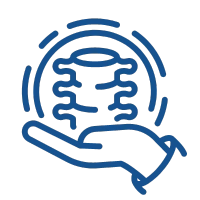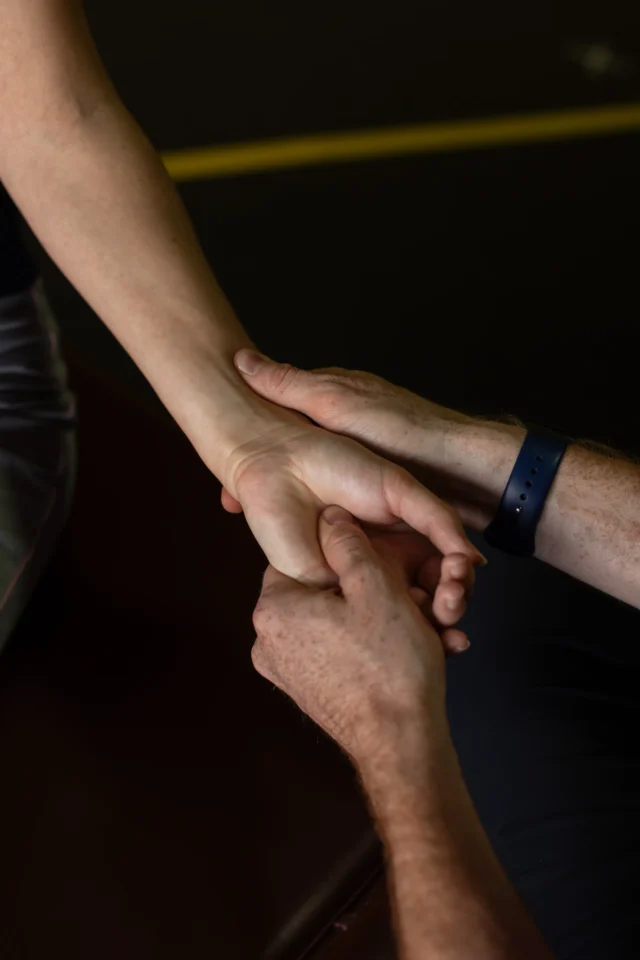Knee pain from ligament damage or meniscus tears can turn simple daily activities into painful challenges. Whether you twisted your knee during a workout, sustained an injury playing sports, or noticed gradual onset pain, understanding your treatment options is crucial for effective recovery.
The knee joint is remarkably complex, with multiple ligaments—including the ACL, MCL, PCL, and LCL—working together with the meniscus to provide stability and cushioning. When these structures become damaged, the resulting pain and instability can significantly impact your quality of life.
Recovery from knee ligament injuries requires a strategic approach that addresses both immediate stabilization and long-term healing. While the path to recovery varies depending on the severity of your injury, following the right treatment sequence can mean the difference between temporary relief and lasting restoration of function.
Understanding Ligament Damage and Meniscus Tears
Ligament injuries in the knee occur when these tough bands of tissue that connect bone to bone become stretched, partially torn, or completely ruptured. The most commonly injured ligaments include:
Anterior Cruciate Ligament (ACL): Often torn during sudden stops, pivoting movements, or direct impact. ACL injuries frequently occur in sports like basketball, soccer, and skiing.
Medial Collateral Ligament (MCL): Typically injured when the knee is hit from the outside, causing the ligament on the inner side of the knee to stretch or tear.
Posterior Cruciate Ligament (PCL): Less common but can occur from direct impact to the front of the knee, such as in car accidents or football tackles.
Lateral Collateral Ligament (LCL): The least commonly injured, usually resulting from impact to the inner side of the knee.
Meniscus tears involve the cartilage that acts as a shock absorber between your thighbone and shinbone. These can occur from acute trauma or gradual wear and tear, particularly as we age.
The Importance of Seeking Orthopedic Treatment First
When dealing with knee pain from ligament damage or meniscus tears, your first step should be consulting with an orthopedic specialist. This initial medical evaluation is crucial for several reasons:
Accurate Diagnosis: Orthopedic specialists use advanced imaging techniques like MRI scans to determine the exact nature and extent of your injury. This precise diagnosis ensures that subsequent treatments target the right structures.
Severity Assessment: Not all ligament injuries require surgery. An orthopedic evaluation helps determine whether your injury can heal with conservative treatment or requires surgical intervention.
Immediate Stabilization: Severe injuries may need immediate immobilization or surgical repair to prevent further damage. Orthopedic specialists can implement these critical interventions quickly.
Treatment Planning: Your orthopedic specialist will develop a comprehensive treatment plan that may include surgery, physical therapy, or other medical interventions based on your specific injury and activity goals.
When Surgery May Be Necessary
Certain ligament injuries, particularly complete ACL tears in active individuals, often require surgical reconstruction to restore knee stability. The decision for surgery depends on factors including:
- Age and activity level
- Degree of instability
- Associated injuries to other knee structures
- Personal goals and lifestyle requirements
If surgery is recommended, the orthopedic specialist will explain the procedure, recovery timeline, and rehabilitation process. Post-surgical rehabilitation is critical for optimal outcomes and typically involves progressive physical therapy protocols.
The Role of Conservative Treatment
Not every ligament injury requires surgery. Many MCL injuries, partial ligament tears, and some meniscus tears can heal effectively with conservative treatment approaches:
Rest and Activity Modification: Avoiding activities that stress the injured structures allows natural healing to occur.
Ice and Compression: Reducing inflammation and swelling in the acute phase of injury.
Elevation: Helping to minimize swelling and promote circulation.
Medication: Anti-inflammatory medications can help manage pain and reduce inflammation during the initial healing phase.
Transitioning to Chiropractic Care
Once your orthopedic specialist has stabilized your condition and you’ve progressed through the acute phase of healing, specialized chiropractic care can play a valuable role in your recovery process. This is where practices like Straight Up Chiropractic can help optimize your healing and prevent future injuries.
Why Wait Until Stabilization?
The timing of chiropractic intervention is important. Once the initial medical treatment has stabilized your injury and acute inflammation has subsided, chiropractic care can address the compensatory movement patterns and muscle imbalances that often develop during the healing process.
When you favor an injured knee, other parts of your body—including your hip, ankle, and lower back—may compensate by altering their normal function. These adaptations can create new sources of pain and dysfunction if left unaddressed.
Advanced Chiropractic Techniques for Knee Recovery
Modern chiropractic care at Straight Up Chiropractic extends far beyond traditional spinal adjustments. Specialized techniques can address the complex relationships between different body systems during knee injury recovery:
Advanced Muscle Integration Technique (AMIT): This specialized approach targets muscle imbalances that can develop during injury recovery. When muscles around the knee become inhibited due to pain or protective mechanisms, AMIT helps restore proper muscle function and strength.
Neural Pathway Integration (NPI): Injuries can disrupt the normal communication between your nervous system and muscles. NPI works to restore these neurological connections, helping your body regain proper movement patterns.
Full-Body Assessment: Rather than focusing solely on the injured knee, comprehensive chiropractic evaluation with Dr. Hall who examines how the injury has affected your entire kinetic chain. This approach identifies and addresses compensatory patterns throughout your body.
Addressing Compensatory Patterns
Knee injuries rarely affect just the knee. When you alter your gait to protect an injured knee, you create a cascade of compensatory movements throughout your body:
- Hip muscles may become overactive or underactive
- Ankle mobility may decrease
- Lower back stress may increase
- Opposite leg may become overloaded
These compensatory patterns can persist even after the initial injury heals, leading to chronic pain and increased injury risk. Specialized chiropractic care addresses these patterns, helping restore normal movement and function throughout your entire body.
Creating Your Recovery Timeline
Your recovery timeline depends on multiple factors including injury severity, your overall health, and adherence to treatment recommendations. A typical progression might look like:
Weeks 1-2: Orthopedic evaluation, acute care management, possible surgery if indicated
Weeks 2-6: Initial healing phase, protected weight bearing, basic range of motion exercises
Weeks 6-12: Progressive strengthening, gradual return to activities, address compensatory patterns with chiropractic care
Months 3-6: Advanced rehabilitation, sport or activity-specific training, ongoing maintenance care
Preventing Future Knee Injuries
Once you’ve recovered from your initial injury, focus shifts to preventing future problems. This involves:
Maintaining Proper Movement Patterns: Regular chiropractic care helps ensure your entire body continues to move optimally, reducing stress on previously injured structures.
Strength and Flexibility Balance: Keeping muscles around the knee strong and flexible while maintaining proper balance between opposing muscle groups.
Activity Modification: Learning to modify high-risk activities or use proper protective equipment when returning to sports.
Your Path Forward Starts with the Right First Step
Knee pain from ligament damage or meniscus tears requires a strategic, phased approach to treatment. Beginning with proper orthopedic evaluation ensures you receive appropriate medical care for your specific injury. Once your condition is stabilized, specialized chiropractic care at Straight Up Chiorpractic can optimize your recovery, address compensatory patterns, and help prevent future injuries.
Don’t let knee pain limit your activities or quality of life. Start with the right medical evaluation, then explore how comprehensive chiropractic care with Dr. Gavin Hall can help you achieve lasting recovery and optimal function. Your knees—and your entire body—will thank you for taking this thorough, professional approach to healing. Schedule a consultation HERE.



